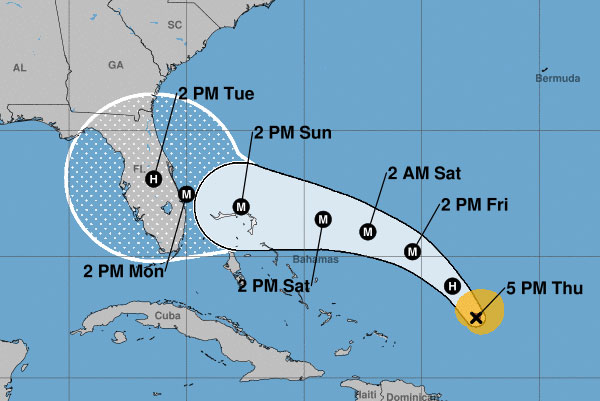

The track uncertainty in NWP at under 3-day lead-time is very uncomfortable, especially considering proximity to land. Sam Lillo, a doctoral candidate at the University of Oklahoma, tweeted an interesting point on the afternoon of September 1st about how worrisome the rapid intensification and track uncertainty of Hurricane Dorian has been: Michael Ventrice - IBM/The Weather CompanyĪ hurricane of this size and intensity can certainly modify its environment and be modified by that environment.


The interaction with the Bahamas, how that interaction might alter the mesoscale structure of the Hurricane, if that interaction induces a wobble, are all valid questions at this point in time The recent intensification of the storm today is not being resolved by the models properly at the time of the 12z initialization. I believe the uncertainty is derived from how the models are resolving Dorian, locally. He has been concerned about the storm environment and how well the models are capturing the rapidly evolving situation. Michael Ventrice is a tropical weather expert with IBM and The Weather Company. Interaction of high pressure ridging with Hurricane Dorian Phillippe Papinĭr. Why has the track forecast been so challenging with Hurricane Dorian? There is still uncertainty with the forecast so coastal Florida, Georgia, and the Carolinas should remain on high alert. This is dramatically different from forecasts only a few days ago. At the time of writing, the official forecast from the National Hurricane Center is for a northward curve and no direct Florida landfall. Hurricane watches have also been issued for Andros Island and from North of Deerfield Beach to the Volusia/Brevard County Line in Florida. I have been in the field of meteorology over 25 years and do not recall seeing warnings about 220 mph gusts for a hurricane. In a 3 pm advisory on September 1st, the National Hurricane Center warned of gusts to 220 mph and 18 to 23 feet storm surges for parts of the Abacos. According to the National Hurricane Center, Dorian is now tied with the 1935 Labor Day hurricane for the strongest Atlantic hurricane landfall on record. The names of particularly destructive or impactful storms are retired. We will not see the name "Dorian" used in the Atlantic basin for any future hurricane. Here is something that you can take to the bank.


 0 kommentar(er)
0 kommentar(er)
